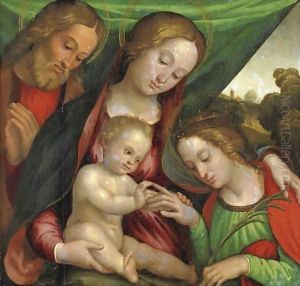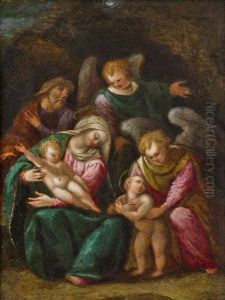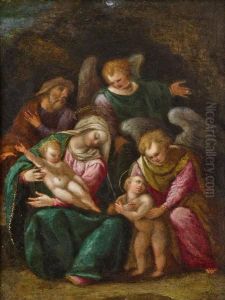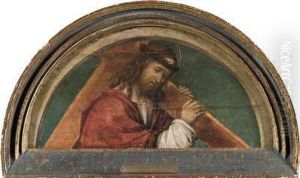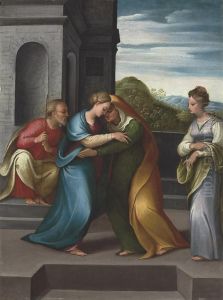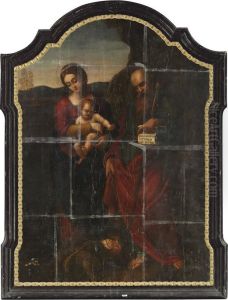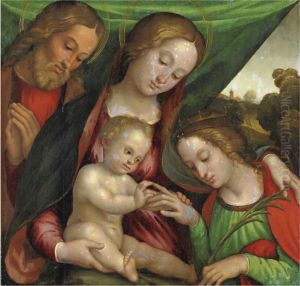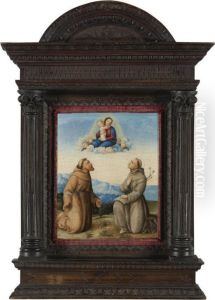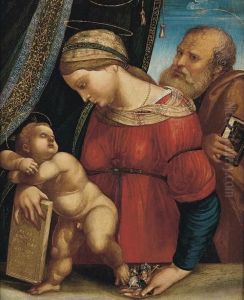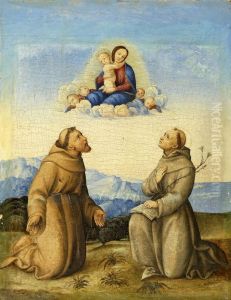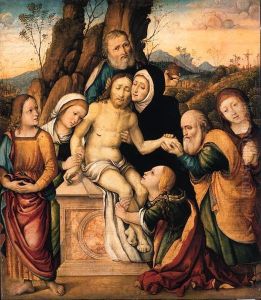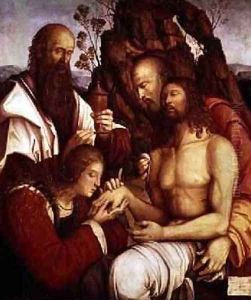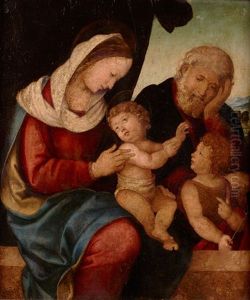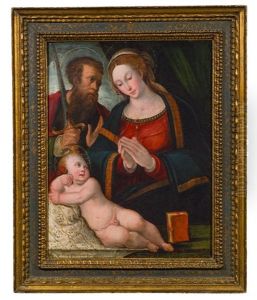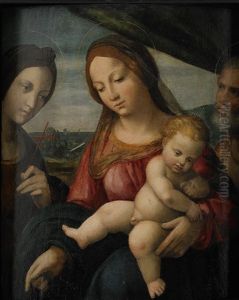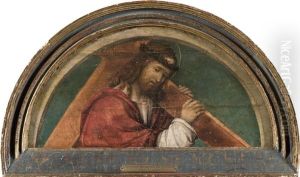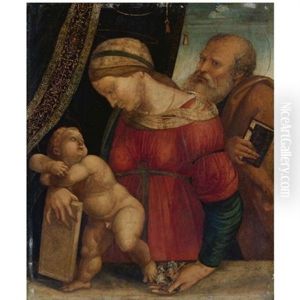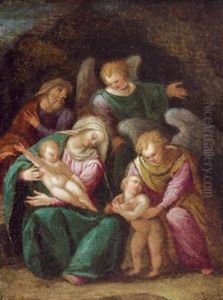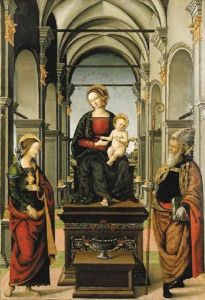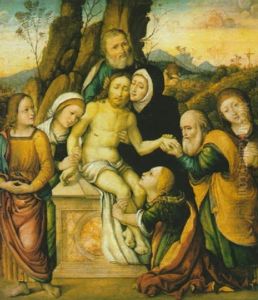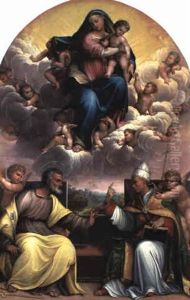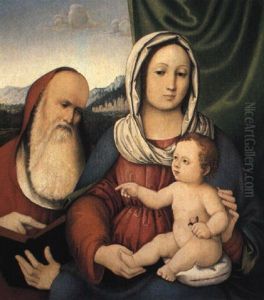Girolamo Marchesi da Cotignola Paintings
Girolamo Marchesi da Cotignola, also known as Girolamo da Cotignola, was an Italian painter of the Renaissance period, active mainly in the Emilia-Romagna region, particularly in cities like Faenza, Forlì, and Cotignola. Born around 1470, Girolamo Marchesi emerged as a prominent artist in the late 15th and early 16th centuries, a period marked by significant artistic developments in Italy. His work is characterized by the use of vibrant color, meticulous attention to detail, and a blend of the traditional and innovative elements of the High Renaissance style.
Marchesi was influenced by the major artists of his time, including Raphael and Michelangelo, but he also drew inspiration from his contemporaries in the Emilia-Romagna region. He was particularly known for his religious paintings, altarpieces, and frescoes, which often featured expressive figures and a masterful use of light and shadow, contributing to the emotional depth of his compositions.
Despite his considerable talent and contributions to Italian Renaissance art, Girolamo Marchesi da Cotignola has not received the same level of recognition as some of his contemporaries. However, his work is appreciated for its artistic quality and its role in the development of the Renaissance style in northern Italy. Throughout his career, Marchesi demonstrated a remarkable ability to adapt and evolve his style, reflecting the dynamic nature of Italian art during this period.
Girolamo Marchesi da Cotignola's death around 1537 marked the end of a significant career, but his legacy lives on through his contributions to the Renaissance movement. His works can be found in various churches and museums, serving as a testament to his skill and creativity as an artist. Marchesi remains an important figure for scholars and enthusiasts of Renaissance art, offering insight into the artistic developments of his time and the broader cultural context of the early 16th century.
